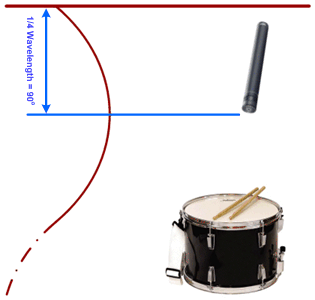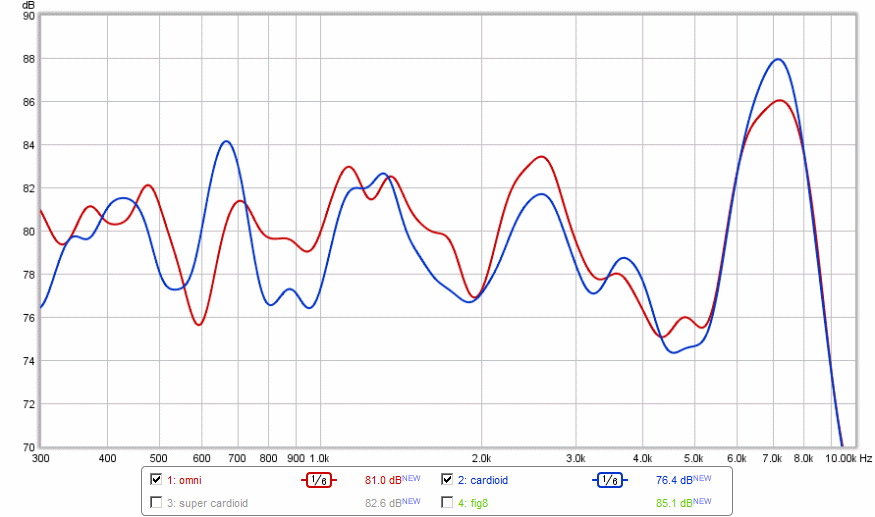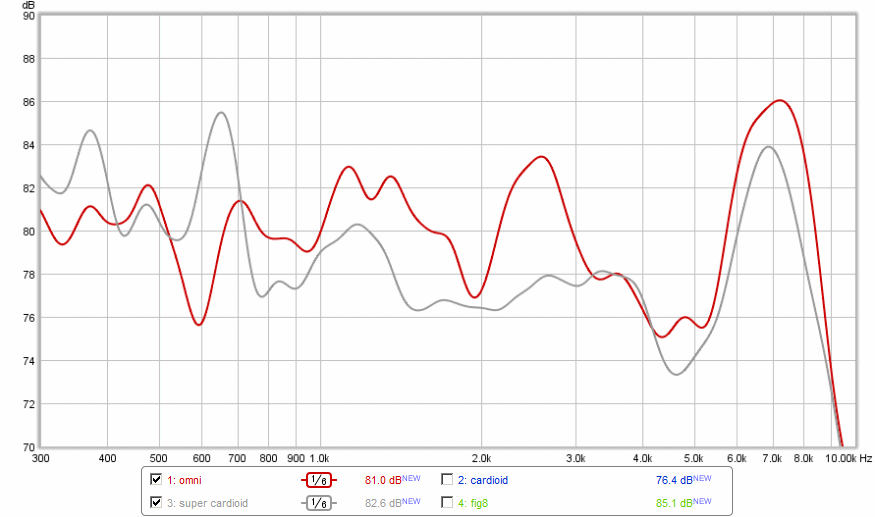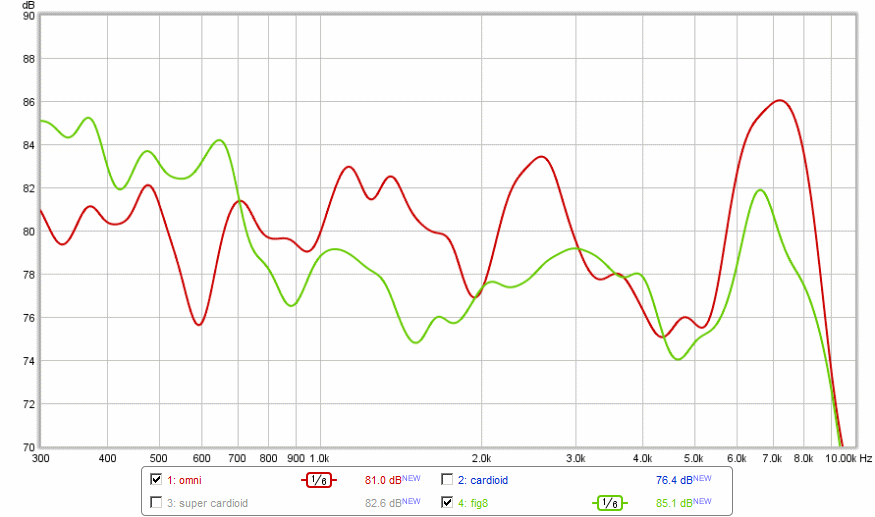|
For years I've struggled with an audio brain teaser I couldn't quite
wrap my head around, regarding sound sources near a reflecting boundary. The classic case
is a microphone over a drum set under a low ceiling. We always advise people to put
absorption on the ceiling, above the drums and mics, to prevent those reflections from
causing comb filtering. Now here's the dilemma: Does it matter if the microphone is
omnidirectional or cardioid? Will the comb filtering that exists at quarter-wave distances
be less severe with a directional microphone pointing down and away from the ceiling?
It always seemed to me that the comb filtered response exists in the
air due to the reflections from above. In the drawing at left, the quarter-wave null
location for some arbitrary frequency is the tip of the microphone. A peak exists an
octave higher, with more peaks and nulls at higher frequencies. So no matter which pickup
pattern the mic has, the sound itself is already comb filtered acoustically at
that location due to the ceiling reflections interfering with the direct sound from the
drum. On the other hand, a cardioid microphone pointed at the speaker won't pick up the
reflections much, but will receive the direct sound. Then again, even with the mic aimed
at the drum set, away from the ceiling, the comb filtering would still be present at that
point in space where the mic is placed! So which is it? |
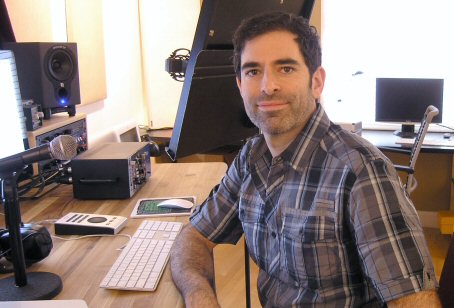 |
Noah Manheimer, Enchanted Gardens
Productions. |
|
With the help of my friend, black belt recording engineer Noah Manheimer, we
tested this riddle using the four available pickup patterns on his AKG C414 XLS microphone
and the excellent Fuzzmeasure software. I have an Audio Technica 4033 cardioid
microphone, and a DPA 4090 omnidirectional mic, but I wanted to use a single microphone in
the exact same place with only the pickup pattern switched. The photo below shows the
setup, with a large glass picture frame on a music stand about three feet away from a
monitor speaker. The microphone was about one foot in front of the glass, pointed directly
at the speaker's tweeter on axis. In this case the speaker served as the sound source, and
the picture glass simulated a highly reflective ceiling. (When the microphone was switched
to Figure 8, it pointed at both the speaker and the glass.) I use a Windows computer, but
Fuzzmeasure is for Macs only, so Noah exported the measurement impulse files and I brought
them into the Room EQ Wizard software to create the graphs below. |
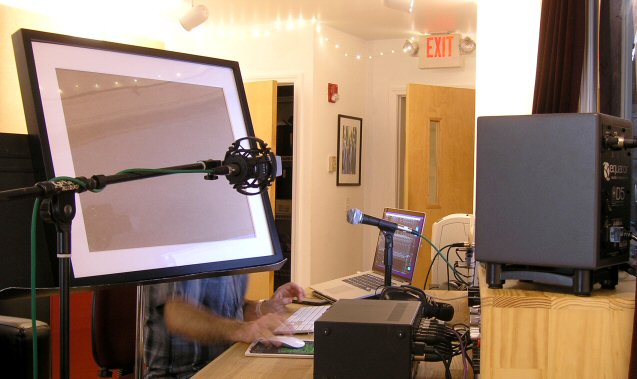 |
The AKG microphone is about one foot in
front of the picture frame glass, and about two feet away from the speaker. |
|
All three graphs use the Omni pattern (red) as a constant, and
compare that response to Cardioid, Super Cardioid, and Figure 8 patterns. I applied 1/6
octave averaging to better see the overall response trends, without being distracted by
many irrelevant narrow peaks and nulls. As you can see, the comb filtering depths are
similar for all four pickup patterns. In fact, it looks like the comb filtering is
slightly less in Omni mode except compared to the Super Cardioid pattern. So this seems to
prove that the filtered response does indeed exist in the air, affecting the sound
captured regardless of the mic's pickup pattern. Therefore, when recording drums - or
vocals or anything else - in a room with a low ceiling, absorption should definitely be
placed on any part of the ceiling that's above either the sound sources or microphones. |
